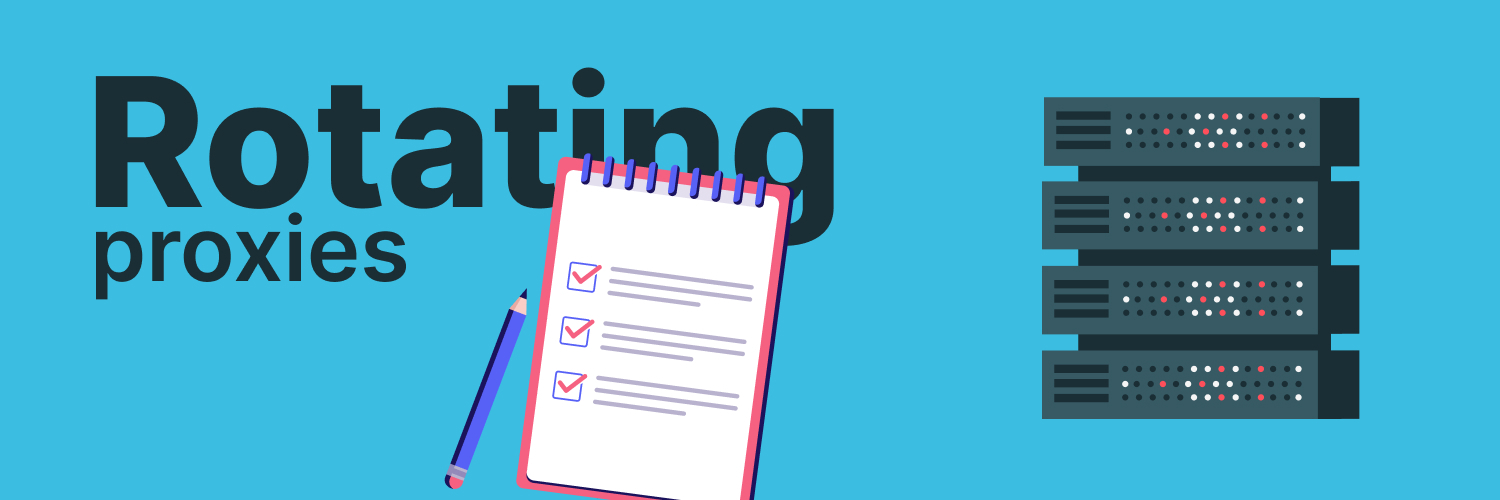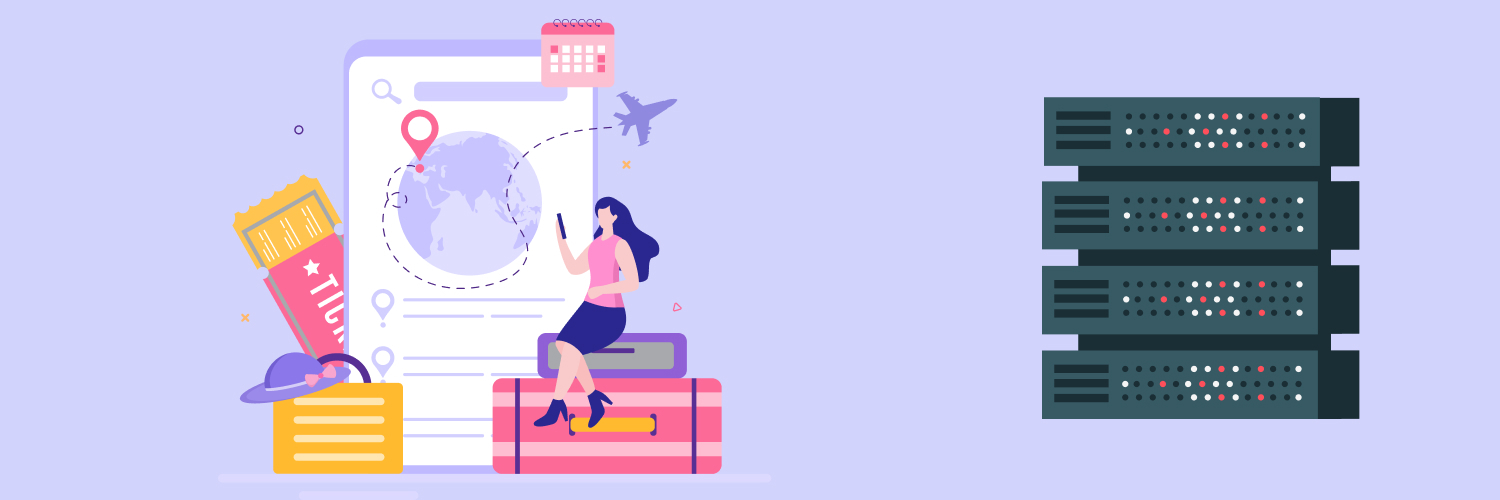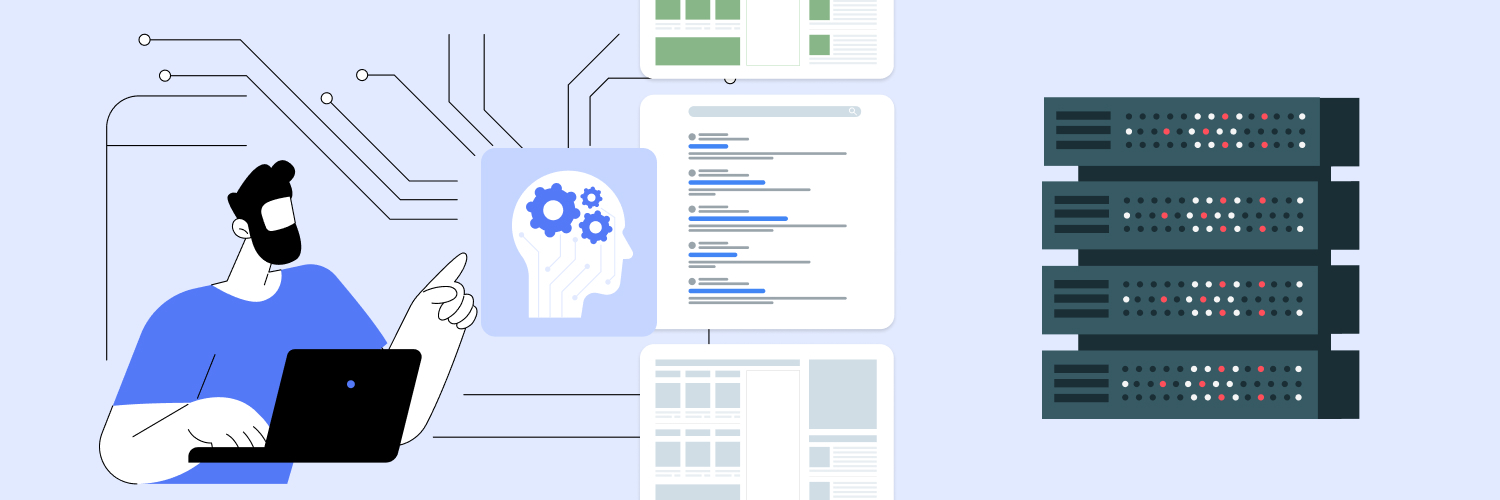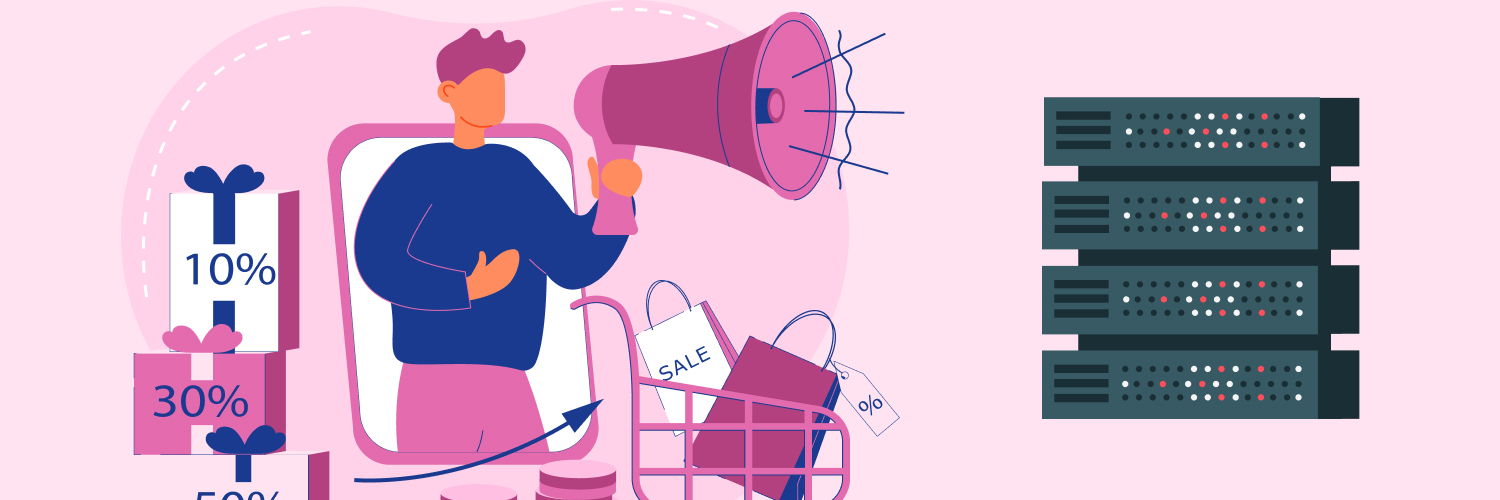Selenium vs. Scrapy for Web Scraping
The investment in web scraping is perhaps one of the most important for companies who need to stay up to date on competition, pricing trends, or other data points found online. Luckily, the days of having to visit each site and collect information manually are long gone. Today, there are web scraping tools that do the work for you in a matter of a few moments and often on a consistent, automated basis. Yet, how that gets done is dependent on the tools selected.
What Is Web Scraping and Why Does It Matter?

Web scraping is a process completed by automated bots that extract content and data points from a website. It extracts the underlying HTML code and the data stored in a database from that code. That is much unlike screen scraping which simply captures the pixels on the screen. The code from scraping can be used to replicate a website in seconds.
There are numerous benefits to web scraping that most companies today need to take into consideration to remain competitive in a digital market.
- Web scraping is how search engines scan or crawl websites to analyze the site’s content to determine its value and rank it.
- Companies use web scraping as a way to gather pricing data. Price comparison sites, for example, utilize these tools on a constant basis to pull the most up-to-date content from end sites for price and product description updates.
- Companies researching products utilize these tools to pull data from a wide range of sites (including social media and forums) to determine their value.
The value of these tools is easy to see (and there are illegal uses for them as well). Yet, as a programmer, researcher, or other party who wishes to utilize web scraping, one of the most important steps in the process is to understand how they work and the difference between them.
In a moment, we’ll compare two tools: Selenium vs Scrapy, to determine which one is better and when either one can and should be used.
How Do Web Scrapers Work?
Web Rayobyte’s Web Scraping APIs are a type of software, often called a bot, that is programmed to tackle a specific task. In this situation, their job is to sift through a massive amount of data and extract valuable information from it. There are numerous types of bots like this, and they can be customized for very specific jobs.
Most of them have the ability to:
- Extract data from APIs
- Recognize unique HTML site structures
- Extract content
- Transform content from those sites
- Store that data
What makes Rayobyte’s Web Scraping APIs challenging for those who are considering their uses is determining which is best. All have the same purpose, and most of them work reliably (although there are some that have a less desirable set of rules they follow). In short, to determine which bots and tools to use, you must consider specific applications and how they work.
Tools matter
When choosing options in tools like this, it is critical to consider all applications carefully based on how well they fit a specific desired goal. The complex HTML structures, as well as dynamic content and diverse formats of data on today’s websites, directly impact the effectiveness of web scraping.
Consider Selenium vs Scrapy

Two of the most talked about web scraping tools are Selenium and Scrapy, and with good reason. These tools are specifically designed to support web scraping.
- Scrapy extracts data from static websites.
- Selenium automates web browsers and extracts data from dynamic websites.
When considering Python Selenium vs Scrapy, you must consider the details, when they are applicable and which one of these tools is the best fit for most needs. To help, we will take a look at the usability, scalability, and the performance of each of these tools, and how compatible they are with various online content types, to determine which is best. We also look at the integration potential each brings to the table.
Usability Comparison of Scrapy with Selenium
First, consider how easy each of these web scraping tools is to use.
Scrapy is a type of Python-based web scraping tool. You can utilize it on:
- Linux
- Windows
- MacOS
- BSD (Berkeley Software Distribution)
One of the best features of Scrapy, in fact, is that it is quite easy to use. It also offers an API that aids in web scraping tasks. For those who want the simplest of options to get started, this is one of the best overall benefits of Scrapy—it just makes scraping easier to accomplish.
Selenium supports numerous programming languages, including Java, JavaScript, C#, and Python. It can also be used on:
- Windows
- MacOS
- Linux
Selenium has a significant learning curve to it. It will take more time to actually learn to use and, in some situations, that means it can also take a significant amount of time to become proficient at it to make using Selenium easy enough for day-to-day applications.
Setting up
Setting up Scrapy is straightforward to do as well. To do so, you will need to install and configure some spiders (which is done using Python code). Then, you can initiate a project. When you do, it will create a folder for your project. Within that folder are the default Python files, which are then organized in a straightforward process. It sounds more confusing than it is, and it only takes a few minutes to get up and running.
As for setting up Selenium, the process is a bit more intensive (as is most of the elements of Selenium). The good news is that once you make the decision to go with this option, you will find the process is straightforward – there are a lot of step-by-step tools available from the company directly, and if you find it challenging, there are some tutorials that can help you wade through the steps. You certainly aren’t going to need to do this with Scrapy.
Scrapy vs Selenium Performance Comparison
Another of the Selenium vs. Scrapy key considerations is based on performance. Ultimately, it makes no sense to invest in anything if you do not have a quality product and end result. Both of these tools are well respected, and both can be functionally easy to use.
To determine the performance of any web scraping tool, you must consider the speed at which it works. The goal of these tool is to collect a huge amount of data and to do so quickly. Speed matters significantly then when judging performance.
Scrapy is perhaps the best choice today for those looking to scrape content from static websites. Its benefit is that it can easily and quickly pull data faster from static sites than Selenium can. To work, its architecture handles memory by processing responses and items in a continuous process. In this way, it does not get bogged down by having to load entire website pages into memory at one time.
Selenium operates a bit differently than Scrapy. Selenium uses browser instances to execute the various interactions. That includes tasks like clicking buttons or completing a form. That slows down the process overall for Selenium. In some situations, Scrapy can prove to be 5x as fast at gathering data.
Selenium vs Scrapy and Memory Considerations
Note a few more things that impact performance with the Scrapy Selenium debate. Scrapy has built-in support that allows it to handle caching and incremental scraping. This allows the tool to scale better. It minimizes redundant requests so it does not complete those tasks numerous times. Instead, it will only capture and process the new information or any content that is updated from its originally gathered format.
Selenium, again, is a bit different in this area. It consumes a huge amount of memory when it is interacting with some websites (particularly JavaScript-heavy sites, for example). That means it captures and places a much larger amount of data in its memory. This can slow down its functionality while also impacting the overall scalability of the product. When your project entails large amounts of scraping, this can become a problem.
If you want to scale Selenium to handle such big data-heavy scraping projects, it is necessary to deploy multiple instances across distributed systems. As noted, that will increase resource demands for the task. That can slow down even some of the fastest computer systems thanks to the demand for RAM and CPU.
Selenium vs Scrapy Documentation Related to Web Content

When comparing Scrapy with Selenium, it is critical to consider application and function as well. Most of today’s websites fall into two categories: dynamic website pages and static website pages. As noted, Scrapy does an excellent job with static sites, and Selenium does well with dynamic pages. Consider the differences and how this impacts their overall user functionality.
Static web page comparison of Scrapy with Selenium
Static website pages do not require a lot of interaction to use them. Most of the time, the user is able to only view the content on the website page and, in many cases, click on links presented.
Both tools can access and scrape static pages, but Selenium is much slower at the process. Scrapy does a better job with these websites because it creates a more efficient and faster process.
Dynamic web page comparison of Scrapy with Selenium
Most of today’s dynamic web pages use JavaScript frameworks. These frameworks, with examples like React and Angular, update content without reloading the page to do so. Scrapy does not simplistically support scraping dynamic website pages like this, or at least those designed using JavaScript.
By comparison, Selenium scrapes dynamic content. This is one of the key reasons for using it.
If you want the benefits of Scrapy but want to be able to scrape dynamic pages, you can integrate tools like Splash or Selenium with Scrapy to achieve this benefit.
Scrapy vs Selenium Integration Options

For many of today’s programmers, it’s critical to consider integration options. The more ways you can use a tool with existing software and apps, the better. There are some good features here to consider as well.
Scrapy integrates easily into most Python tools. That includes, but is not limited to:
- MySQL
- MongoDB
- PostgreSQL
Also notable, with Scrapy, you can also use object-relational mappers, called ORMs, to make the process of storing data in relational databases easy. For those situations where you need to process and analyze data at a more in-depth level, you can use pandas to do so – this is a commonly used data manipulation and analysis library utilized for Python applications.
Scrapy also integrates with Django and Flask, which means you can use it to aid in the building of web applications that also integrate web scraping. FastAPI is also an integration option, which will let you create higher performing web APIs (which can make scraping requests easier to manage overall).
As for Selenium, integration is a bit different for this tool. It has browser drivers that work between Selenium WebDriver APIs and the website browsers. You download the driver to integrate into the browser you want to use, which could include Chrome, Safari, Firefox, or Edge.
If you want to use Selenium to test web application functions, you can do so, but you will need to integrate the tool into other testing frameworks because it does not have its own testing framework built into the system. Popular options include Selenide, CodeceptJS, and Helium. It’s possible to integrate Selenium with CI tools, including Travis CI and Jenkins. Doing this will allow for the use of automation scripts as part of a CI/CD pipeline.
Which Is the Best for Your Needs?
Selenium vs. Scrapy is a fair fight, and ultimately, it depends on your objectives. You can also compare these products to other tools, like Scrapy vs. Playwright or others. The key is to know your needs and then select.
What Makes Selenium a Better Option Than Scrapy?

Selenium has a number of factors going for it:
- It is an open-source framework.
- It is ideal for dynamic website scraping.
- It has tools that are ideal for web testing and automation.
- As a result, many prefer the browser interaction option over other tools.
- Selenium tends to be a better option when it comes to simulating human-like interactions with browsers (when you want to mimic what a person is likely to do during their interaction with a website).
Perhaps what makes Selenium stand out is its ability to handle more of the tasks that people do when they visit a website. For example, if you want to test the functionality of a website, you want to know how people will navigate it. This tool allows for clicking buttons, filling in text fields as needed, and even manipulating dropdown menus to provide access to the information desired.
The automated testing and browser automation features make this an important tool to consider for applications and data processes that need to focus on that area.
What Makes Scrapy a Better Option Than Selenium?

Scrapy offers a number of its own benefits:
- It is a purpose-built open-source framework.
- It is designed specifically to crawl and scrape websites to gather data.
- It is ideal for fast-moving scraping because it does an excellent job of picking up new data (rather than all data).
Scrapy is a tool that has a very specific purpose, and within that purpose, it excels. It operates within the Python ecosystem and, by far, is easier to use for the tasks that it can provide. There are a few reasons why Scrapy is a tool you certainly want to keep in mind. For example, for large projects, it is ideal for those who need to gather data fast and do not need to go into the depth of human-like interactions. At the same time, Scrapy can do a great job with smaller tasks as well.
More so, with integration options that are nearly endless, this tool can handle a variety of functionalities to help meet your objectives. Scrapy’s benefits are much more than just a simple scraping tool.
Python Selenium vs Scrapy: Pros and Cons to Consider

Here is another way to compare Selenium vs Scrapy, based on the pros and cons of each.
The pros of Scrapy include:
- It’s fast: It can crawl through and scrape data within a short timeframe. It is built specifically for this purpose and does the job better than most other tools.
- Large project ease: Scrapy also does an excellent job of scraping a lot of data fast. It can handle smaller projects, but it can also tackle some of the largest data mining operations out there.
- Memory storage features: One of the reasons why it works so well is because it does not slow down your operations by not using as many memory resources. This makes its performance far easier to manage.
- Customizable features are a plus: Also notable is that Scrapy is an excellent choice for its ability to be customized to fit various needs. There is a huge community with ample documentation out there for just about any specific needs. You can find ways to accomplish just about anything.
- Easy to use: It is easy to see this benefit right away. Scrapy is a robust tool, but it is not hard to use, and it really takes only a short amount of time to get to work.
The cons of Scrapy include:
- It does not do dynamic pages: This is a big drawback for many instances in which you need dynamic content capabilities.
- Does not integrate with your browser: Scrapy makes an excellent choice for gathering data, but it does not do any of the human-like interactions that Selenium does within browser applications.
Selenium pros include:
- Dynamic web page tools: Because it can handle dynamic websites more easily, it can be the best option for those who need to interact with any type of JavaScript website page.
- Browser interactions are excellent: This is the key feature that makes Selenium a highly effective option – the human-like interactions are an important component for various application needs.
- Device and cross-browser support: You can utilize Selenium with various browsers and most types of devices, which makes it simple to integrate across organizations.
Selenium cons include the following:
- It is much harder to learn: You will likely spend some extra time learning how to install and get it running. For some, that can be a problem.
- It weighs down computer function: Because of how it works, it can slow down your interactions and can take time to process most data.
- Cannot scale it: You also do not get the ability to scrape this architecture for big tasks, which can be limiting for many programs themselves.
How to Determine the Best Solution for Your Needs
Selenium vs Scrapy is a popular debate. Selenium uses VPN and other tools, which can be beneficial in some situations, but Scrapy has its place as well. As you consider the options for data extraction, you must think about what you need and want to access, as well as the types of resources you have available to you.
How to Get the Help You Need for Web Scraping

Web scraping is a powerful process that brings a lot of benefits to any interaction. The key is to know how to maximize the outcome of any project. Rayobyte is a solution not to overlook. It is one of the most reliable proxies available today that can facilitate success in web scraping, helping your organization to easily move through websites using any type of web scraping tool with ease.
If you want to find the best solution for a proxy provider to facilitate fast and efficient web scraping, look at what Rayobyte can do for your needs. With 24/7 live support, a large proxy pool, and 99.9% uptime, it is the leader in solutions.
The information contained within this article, including information posted by official staff, guest-submitted material, message board postings, or other third-party material is presented solely for the purposes of education and furtherance of the knowledge of the reader. All trademarks used in this publication are hereby acknowledged as the property of their respective owners.




